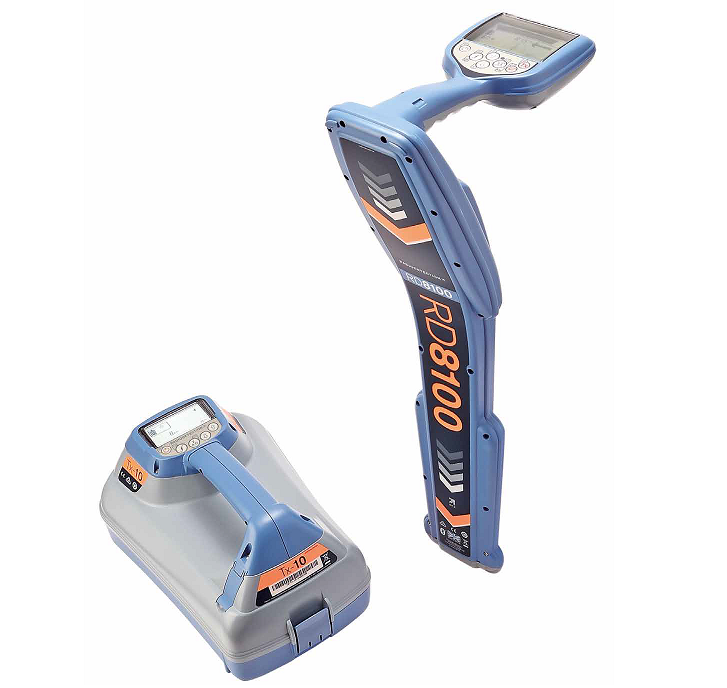
The Radiodetection RD8100 is designed to offer the maximum precision in the loaclización of traces of cables and pipes for prevention of damage in civil works.
The manufacturer Radiodetection commercially launched the first two antenna locators for cables and pipes more than forty years ago, they have been the pioneers in many technologies that are widely used in today's industry for localization. Behind developments such as depth measurement, StrickeAlert and compass orientation, there is a need to make underground service excavations simpler and safer.
The Radiodetection RD8100 range of locators is the most advanced, containing five precision ground antennas, made to measure, which allows you to choose the optimal level of precision for the work you intend to perform.
Due to the increasing complexity of today's public infrastructures, localization professionals need more powerful and flexible tools. Features such as current direction and iLOC combine with the range of Tx transmitters to provide highly sensitive locations, even in difficult conditions.
Usage logging options and integrated GPS automatically generate data for customer reports, or internal quality and safety audits to promote best practices at work.
The RD map app for Android is a real-time map and sharing tool that creates maps of underground utilities, while the RD Manager for PC program provides a set of useful tools for the user, such as installing the latest software for your locator, remote certification of your locators using eCert, and registering your products for an additional 2-year warranty.
Guidance Mode allows you to rapidly follow the path of a buried utility. Intuitive proportional arrows, a directional ‘needle’ and differentiated audio tones guide you along the target pipe or cable.
The 4 kHz locate frequency is designed for tracing high impedance lines such as twisted pair telecoms or street lighting. Since such utilities are often found in areas of dense infrastructure, you can combine 4 kHz with CD to ensure you follow the right line.
Up to 5 additional frequencies can be programmed into all RD8100 pipe and cable locators to match it to the signals found on your target networks.
Combine the RD8100 cable and pipe locator with an accessory A-frame to identify and pinpoint insulation sheath faults to within 4" (10cm).
When a signal transmitter can’t be connected, tracing individual underground power lines through complex networks can be a real challenge: conflicting or powerful signals can confuse the operator, or combine to create a broad wash of signal.
RD Map™ uses Bluetooth to create, in real time*, detailed maps of buried utilities: each survey measurement parameter is appended to the GPS positional information obtained by the locator, external or Android device to map the route of the tracked utility. Map files (CSV or KML) can then be shared via e-mail or any compatible messaging system. * Requires data connectivity and availability of Google Maps.
Combine the accuracy of Peak locating with the rapid ground coverage of Guidance arrows in the new Peak+ mode. A single key press lets you check for distortion by comparing Null with Peak. Peak mode locating is more accurate and less prone to distortion - that's why it's always been at the heart of Radiodetection's cable and pipe locators. Null mode locating can be faster, but is inherently less accurate. Peak+ combined these modes, giving the accuracy of Peak and the speed of null.
Current Direction is a powerful tool that augments the capabilities of pipe and cable locators to help operators pick out their target line from others nearby. Using fundamental properties of electromagnetism, CD allows you to locate your utility quickly, and eliminate wasted time following false trails.
GPS equipped RD8100 cable and pipe locators (models ending with a 'G') automatically log key locate parameters every second, providing a comprehensive picture of individual locates, or allowing you to assess usage patterns over periods of a year or more. The data generated can be used to ensure compliance with best-practice, or to identify training needs before poor work habits develop. Additionally, the data can be used for internal audits, or shared with partners or clients to evidence task completion, or compliance to their requirements. Usage data can be exported in multiple file formats – for example KML for Google Maps to confirm where and when work was performed.
Contact us by filling out this form: